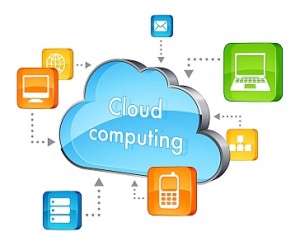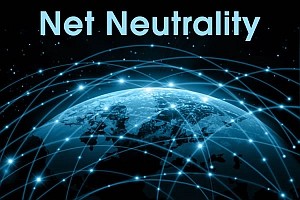Cloud computing is basically defined as a type of computing that relies on sharing computer resources rather than having local services or personal devices to handle applications. The term cloud basically refers to the concept that means grid of computers serving as service-oriented architecture to deliver software and data. Cloud utilizes the resources from the computer as collective virtual computer, where the applications can run independently from particular computer or server configurations. A lot of software that people use these days are mostly web based and cloud takes advantage of that to bring it to next level. Cloud computing is basically sharing software, resources, and information via a network connection such as the internet. In such structures, cloud servers save the end users information, data and can serve the service applications as well reducing the need for storage space on client computers. End-users have the freedom to access the information whenever one can obtain internet connectivity and do not have to worry about upgrading service applications with the latest version to be released. This allows users to edit files such as power-point, documents on their mobile devices or tablets without having to have the specified software installed in the computing device being used while away from home or the office.
Cloud computing can basically be imagined as clouds consisting of layers, mostly the back-end layers or the front-end layers. The front-end layers are basically the ones we interact with. The back-end consists of the hardware and the software architecture that delivers the data we see on the front-end. Clouds use a network layer to connect users’ end point devices like smartphones or computers, to resources that are centralized in a data centre. Users can access the data centre via internet or a computer network or both. Clouds can also be accessed from any location, allowing mobile and tablet workers to access their business systems on demand.
Using this cloud computing technology has associated with itself many advantages. There’s a significant workload shift. Local computers no longer have to do the heavy lifting when it comes to running of applications. The network of computers that make up the cloud handles them itself. Hardware and software demands on the user side decrease. The only thing the user’s computer need to run is the cloud computing system’s interface software, which can be as simple as web browser. And the cloud’s network takes care of the rest. It is cheaper for bigger cloud computing folks to make efficiency improvements because they can spread the cost over large server base and can afford to have more dedicated folks focused on efficiency improvements. And hence such technologies increase volume output or productivity. It reduces spending on technology infrastructure. It is pay as you go, based on demand as it helps maintain easy access to one’s information with minimal upfront spending. It improves accessibility as one can access it anywhere, anytime, making life so much easier. More users, more diverse users, and more users in different places means computing loads are spread over the day, allowing for increased equipment utilization. Cloud installations use virtualization and other techniques to separate the software from the characteristics of the physical servers and hence are very flexible. Using this technique means you can redesign servers to optimize them and drop certain energy costly features. It minimizes licensing new software and hence eases stretching and growing without the need to buy expensive software licenses or programs.
However along with such benefits, there are several disadvantages as well. For security purposes, trusting one’s data to a service provider just isn’t an option. When making the shift to cloud computing, there is a certain level of trust required on the part of the consumer or organization making use of the service. Although organizations do not have to invest time and money in making software updates when leveraging cloud services, they do not lose control over the timings of the upgrades. In some cases, this can result in the loss of productivity on the client side in addition to unplanned costs to upgrade the data to meet the requirements of the new software. When leveraging cloud services, organizations are relying on both the service providers and the organization’s computers being able to access the internet. Depending upon the service being used, it may or may not be able to provide a light-weight online option for work to be done by clients until service is restored. While internet access is increasingly widespread, it is still not everywhere just yet. If the area you are in doesn’t have internet access, then you would not be able to open any of the documents or data you have stored in the cloud.
Besides such factors, there are many applications that use such computing technology. One such application is the iCloud. Apple’s iCloud allows you to store music, documents, photos and other files via a Wi-Fi. You can access them from all your devices. Another such application is the Google Cloud Connect for Microsoft office. This Google Cloud Connect allows various users to connect through Microsoft office. These includes simultaneous sharing and editing of Microsoft word, PowerPoint and excel documents. IBM SmartCloud provides numerous services for IT companies, such as developing applications in the cloud or using the cloud as a back-up for your company files.
Nevertheless, because of its advantages this cloud computing technology is a great asset for the society and has been accepted greatly worldwide.
-SIMRAN MEHTA




